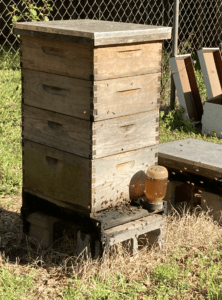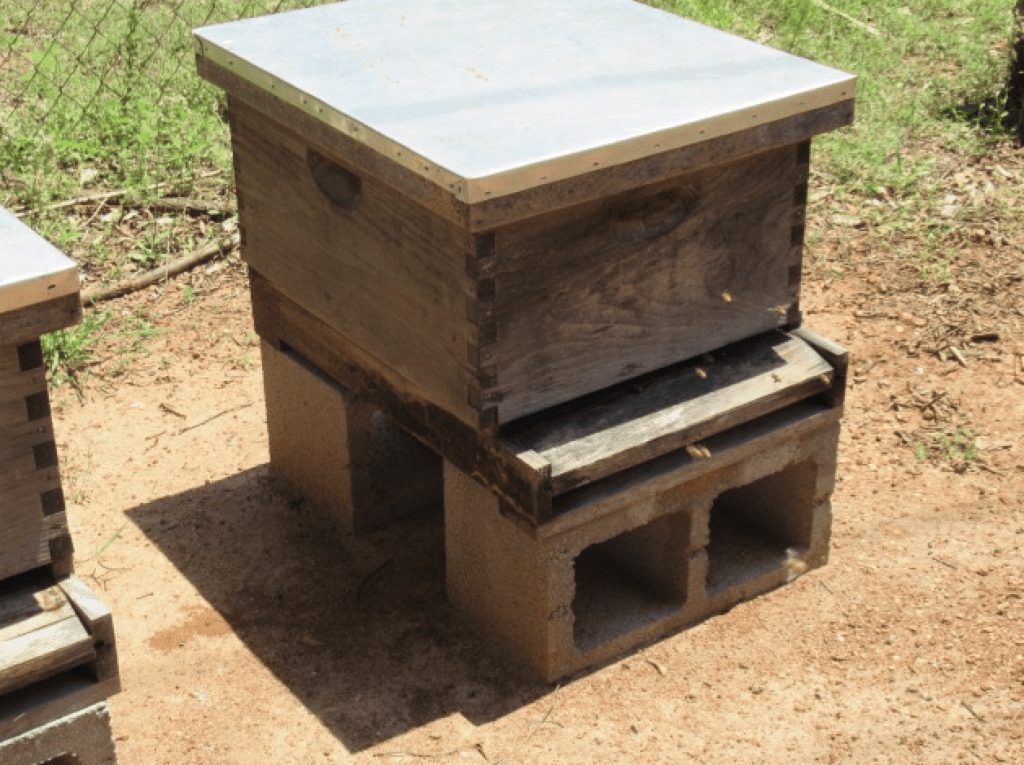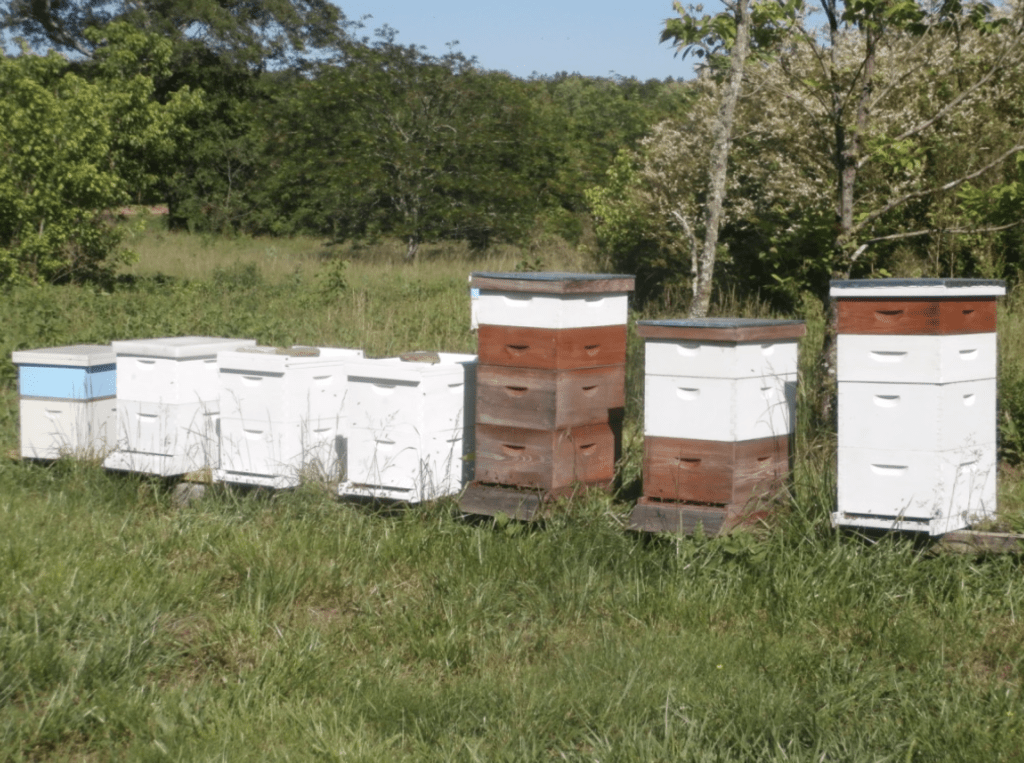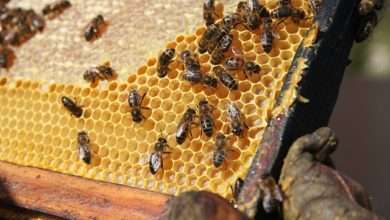Honey Bee Hive Placement

Introduction
Honey bees have played a significant role in pollinating our crops, and of course, the sweet, golden honey they produce is a delicious treat. It’s no wonder that people are drawn to the idea of keeping bees, but one question that often comes up is, “Where should I put my honey bee hive?”
It’s a vital question to consider because the location of the hive can impact the health and productivity of your bees. In this guide, we’ll discuss the factors to consider when choosing the best location for your honey bee hive.
Sunlight
When it comes to the ideal location for a honey bee hive, there are a few things to keep in mind. Firstly, it’s crucial to find an area that receives plenty of sunlight. Honey bees thrive in warm and sunny conditions, and a spot with direct sunlight for at least six hours a day is ideal.
Also, hives place in the shade tend to attract Small Hive Beetles.
Water Source
Another essential factor to consider is the proximity to a water source. Honey bees need water to cool the hive and maintain the humidity within it. If you don’t have a natural water source nearby (within 100 feet), providing a shallow dish of water can be helpful.
Wind
Finally, try to find a location that’s sheltered from strong winds. While honey bees are resilient creatures, strong winds can make it challenging for them to fly outside of the hive. A sheltered spot, such as behind a fence or in a corner of your yard, can help protect them from heavier winds.
Distance from Other Hives
If you’re planning on keeping multiple honey bee hives, it’s essential to keep a safe distance between them. The reason for this is to prevent the spread of diseases that can impact the health of your bees.

The recommended distance between hives is around 1-3 feet. This distance can help to prevent the spread of some of the more contagious honey bee diseases, such as American Foulbrood.
It is also much easier to work your bee colonies if you leave at least 2-3 feet behind them.
It’s also recommended that you avoid placing your hives near commercial beekeeping operations or feral colonies. Doing so can increase the likelihood of disease and pest problems in your hive.
Hive Density
Honeybee hive density refers to the number of honeybee hives in a given area of land. This measurement is typically expressed as hives per hectare or hives per square kilometer. Hive density can vary greatly depending on the region, type of land, and the availability of nectar and pollen.
A general rule of thumb is that an acre can support up to 12 honeybee hives comfortably
Flight Path
When leaving the hive, bees tend to fly in a straight line, oriented in the direction of the sun. They use the sun as a reference point to help them navigate in a particular direction.
So, it is best to not place your hives, so they face within 20 – 30 feet of an obstruction, such as trees, fences, buildings, etc.
Traffic Areas
Most experienced beekeepers avoid high traffic areas such as:
- Kid’s playgrounds
- Parks
- Sidewalks
Predators
Everybody knows that bears like honey, but rodents, ants, goats, cows and other mammals and insects can also interrupt your beekeeping operation as well. Electric fences will deter most large predators.
It is also important to consider the location’s proximity to the habitat of predator animals.
Hive Stands
Hive stands are important because you do not want your colonies sitting on the ground, due to ants. They should not be too high, as it may be difficult to lift your supers full of honey.

In addition, the hive stands should be heavy-duty and strong enough to withhold the weight of a hive full of honey (up to 150 lbs).
You can make your hive stands out of wood or with cinder blocks. I personally use cinder blocks, as they are cheap, portable and just the right height.
Security
Another essential factor to consider when choosing the location for your honey bee hive is security. Honey bees are a valuable commodity, and beehive theft is unfortunately not uncommon.
To protect your bees and your investment, it’s vital to choose a location that’s not easily visible from the road or footpath. You can also invest in a secure fence or hedge around the hive to keep intruders out.
Neighbors
It’s best to take a proactive approach with your neighbors, by informing them of your beekeeping
intentions. Many beekeepers will deliver a jar of honey each year to close neighbors, to keep relations on solid ground. That way, when bees drink from your neighbor’s pool or fountain, they may be more understanding.
A good idea is to face the entrance of your hives away from neighbor’s property.
Local Laws and Regulations
Before you set up your honey bee hive, it’s worth checking if there are any local bylaws or ordinances regarding beekeeping. Some municipalities may have restrictions on the number of hives you can have or where you can place them.
It’s essential to check with your local city or county government or beekeeping association to ensure that you’re in compliance with any regulations. Doing so can prevent any potential issues with your neighbors or legal troubles down the line.
Conclusion:
It is clear that the placement of honey bee hives is crucial to their survival and productivity. Sunlight, water sources, traffic areas, and predators all play a role in determining the ideal location for a hive.
A well-placed hive can thrive and produce an abundance of honey, while a poorly placed hive can suffer from stress and disease. So, whether you are a seasoned beekeeper or just starting out, consider the key points mentioned in this post when selecting a location for your honey bee hive.

Remember, the right placement can make all the difference for the health and ultimately the success of your hive. So, buzz on, bee enthusiasts, and find the perfect spot for your honey bees to thrive!
FAQ
Why is Hive Placement Important in Beekeeping?
Hive placement is important because it impacts the health and productivity of bee colonies. The hive should be placed in a location that has ample sunshine, shelter from wind, and is not exposed to extreme temperatures.
How Do I Choose the Best Location for Beehive Placement?
Choose a location that is free from any potential environmental hazards like pesticides, pollutants or standing water. Also, the hive should be placed in an area with easy access for you to inspect the hive, check for pests, and harvest honey.
Can I Place Beehives in Any Area of My Property?
If you own a private property, then you can place beehives anywhere that is convenient for you. However, if you plan to keep bees on public land, it’s essential to check with local authorities to ensure you are meeting any regulations or restrictions.
Is There Any Particular Time to Place My Beehive?
The best time to place beehive is during the spring season when flowers and plants are blooming. As honeybee colonies require consistent source of nectar and pollen for their survival, spring season provides the best environment for hive placement.
Do I Need to Have a Fence around My Beehive?
Having a fence around your beehive is a great way to deter animals and humans from unintentionally disturbing the hive. This not only keeps your bees safe but also protects your property from potential damages.
How Do I Ensure My Bees Have Enough Food?
Maintaining a consistent supply of nectar and pollen-rich flowers around the beehive is the best method to ensure bees have enough food. Planting native wildflowers or maintaining a garden of pollen-rich flowers can be a great way to provide for your bees’ nutritional needs.
Can I Move My Beehive After Placement?

Moving a beehive after it has been placed can be challenging and stressful for the bees. So, it’s best to avoid moving a hive as much as possible. However, if you have to move the hive, it’s important to move it gradually, for instance, a few feet at a time.
What Should I Do If I Encounter Pests in My Beehive?
Pests like ants or wasps can be a problem for bee colonies. If you see pests in your hive, you can either try to remove them by yourself or call a professional for help. Using a natural pest control method is best for the safety of your bees.
Can I Harvest Honey Immediately After Hive Placement?
It’s important to allow honeybee colonies to establish themselves and build up the appropriate amount of honey stores before harvesting. Most beekeepers wait until the second or third season to harvest honey to give the bees adequate time to establish and thrive.




